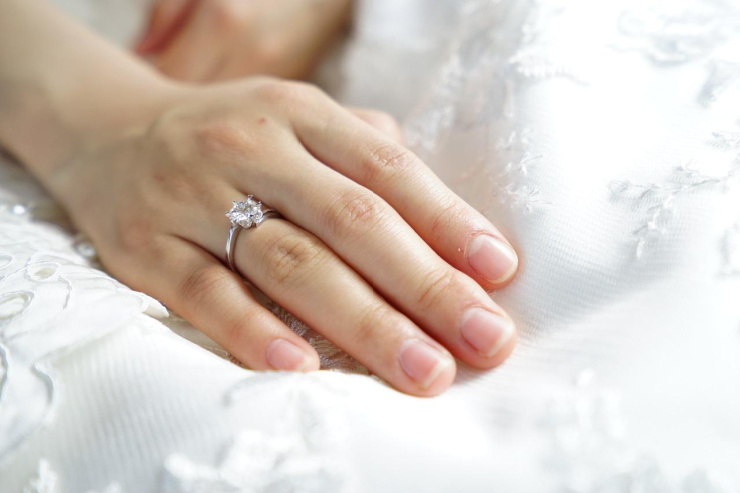A Brief History of the Engagement Ring
In 850, Pope Nicholas I signified engagement rings’ meaning as a man’s intent to marry. Gold was the most popular material for such rings during this time. Then, back in 1947, diamonds became the stone of choice for diamond rings through an amazingly successful de Beers marketing campaign touting the slogan “Diamonds are Forever.”
“Diamonds Are a Girl’s Best Friend”
Everyone knows the song “Diamonds are a girl’s best friend.” It’s true, you know. But the problem with traditionally mined diamonds is that the diamond industry artificially inflates their cost by creating false scarcity due to being stockpiled. This stockpile was estimated at $5.2 billion in 1999 and would be worth about $9.1 billion today. However, you should note that de Beers promised to stop stockpiling in 2000. Diamonds also have a human toll, often being a point of contention in wars and political upheavals. The methods used to mine them are often environmentally unsustainable. But what if you could have diamonds’ beauty, luxury, and mystery without the expense? That’s where lab-grown diamonds come in.
The Beauty of Diamonds
The 4 Cs of Cut, Colour, Clarity, and Carat are what gemologists use to judge diamonds. Cut refers to the proportionality, sparkle, and brilliance of the diamond. It also notes the positioning and number of facets the diamond has. Various cuts can be defined as follows:
Round Brilliant
Princess-Cut
Emerald-Cut
Asscher-Cut
Marquise-Cut
Oval-Cut
Radiant-Cut
Pear-Shaped
Heart-Shaped
Cushion-Cut
Colour refers to the colour a diamond has. It’s exceedingly rare to find a diamond without any colour at all. The clearer a diamond is – that is, the least amount of colour it has, the more valuable it is. Keep in mind the setting’s tone can affect how the diamond appears.
Clarity: looks at the diamonds’ external imperfections, known as “blemishes.” Internal flaws, known as “inclusions” or “internal characteristics,” are those things that give diamonds their character. Diamonds with the least amount of inclusions are the most expensive.
Carat represents the diamond’s weight, not necessarily its size. A diamond may have a heavier carat weight than another, but due to other factors such as poor cut, a high number of inclusions, and poor colouration may still look less brilliant than one with a smaller carat weight.
Lab-Grown Diamonds
- They are indistinguishable from traditionally mined diamonds to the naked eye. Only specially-trained gemologists can only find these differences with highly advanced tools designed for that exact purpose.
- They’re grown in about a month instead of being made in millions of years.
- Most people can’t tell the difference between a mined diamond and a lab-grown one
- They’re formed with the same processes as natural diamonds using heat and pressure.
- Designation between lab-grown and mined diamonds lies only in their creation and origin.
- Depending on the creation method, they are often more environmentally friendly. The CVD method of lab-grown diamond creation saves, 143 lbs (65kg) of C02, Approximately 126 lbs of air pollution, 250 tons of earth, 120 gallons of water, equivalent to about 2.86 barrels
Lab-Grown Diamond Engagement Rings
In recent years, lab-grown diamond engagement rings have become more popular. In fact, lab-grown diamond engagement ring sales are up 63% while simultaneously eroding traditionally mined diamonds by 25% over the same timeframe. This shift in consumer attitude may be due to the cost, which can be 72% cheaper than traditionally mined diamonds, thus allowing consumers to opt for larger stones for their engagement rings.
The VRAI Difference
VRAI offers only “excellent cut” lab-grown diamonds. Their most popular engagement rings come in the following styles: “Signature Solitaire,” “Classic,” and “Three-stone” that are set in platinum or yellow 18-carat gold. In addition to the engagement rings, they also offer the following types of jewellery:
- Necklaces that come in Solitaire, Pendants, Tennis, and Medallions
- Earrings, including Solitaire Studs and both “Pavé Huggie” and “Bezel Drop Huggie” hoops, which are set in yellow, white, or rose gold.
- Bracelets, including their “Bezel/Bezel Station Bracelet” and “Tennis Bracelet,” both of which are customisable in shapes and set in yellow, white, or rose gold.
VRAI Lab-Grown Diamonds Pricing
VRAI is a vertically-integrated jewellery company. Their environmentally friendly and sustainable process removes intermediaries and markups, providing excellent-valued diamonds. Furthermore, they ensure all of their diamonds have no human costs. Because they own the whole manufacturing procedure, use superior technology, cut and polish in-studio, and their diamonds pass through fewer hands, they pass along those savings to the consumer.
Buy From VRAI
If you’re shopping for diamond jewellery, specifically engagement rings, why not take the time to look at VRAI’s fantastic selection of lab-grown diamonds today? The environment will thank you for choosing a green product, and your wallet will thank you for the savings. Your conscience will even thank you, too. Buy a sustainable diamond today!
*Collaborative post








No comments